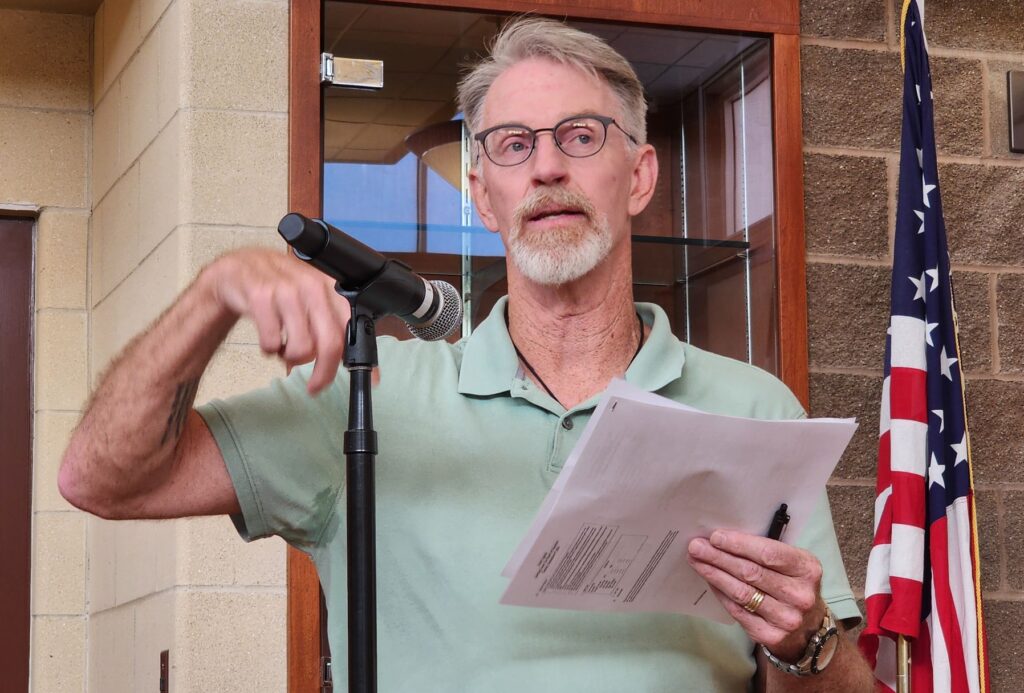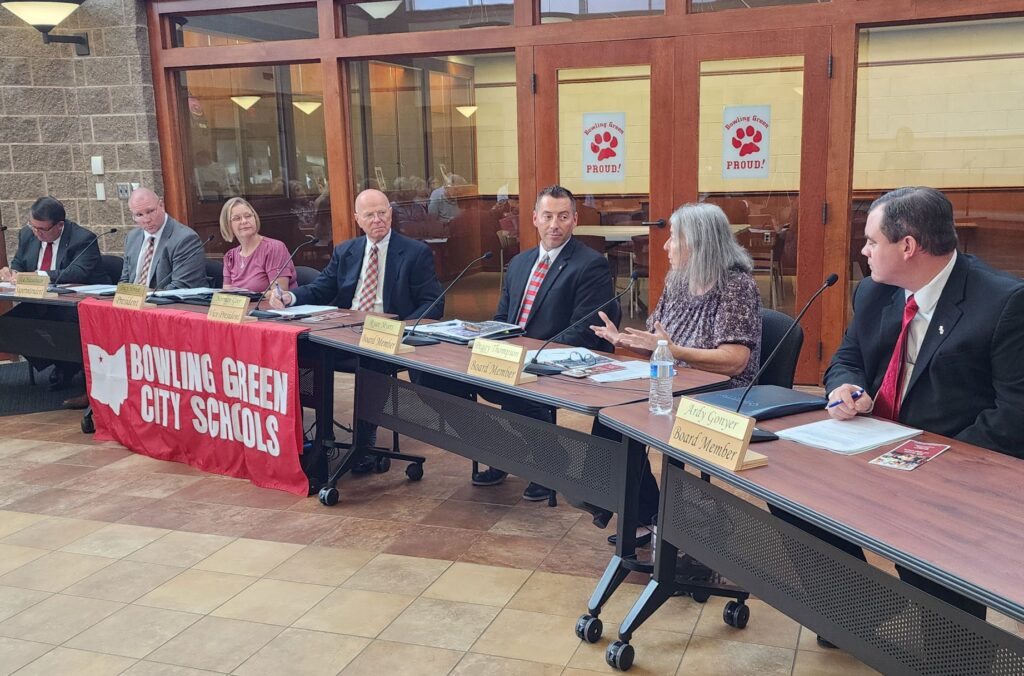By JAN McLAUGHLIN
BG Independent News
A lot can change in a year.
On Tuesday evening, Bowling Green Board of Education basked in the district’s improved state report card, continued plans for the new high school, and explained the need for the income tax issue on the November ballot.
But first, the school board heard from a couple neighbors of the high school – one wanting a buffer between her home and the new high school parking lot, and one warning of the continued drain on public education funds by Ohio’s school voucher program.

Susan Meszaros, who lives on Jefferson Avenue just to the west of the school complex, asked the board to consider a privacy buffer between her home and the parking lot for the new high school.
“I love Bowling Green. Our kids are recent graduates,” she said. But unlike some neighboring districts – like Otsego, Eastwood and Elmwood – Bowling Green doesn’t butt up against farmfields.
“We put up with a lot already,” Meszaros said, listing the stadium lights, cowbells and sirens. Greenery would “make it less irritating,” she said.
Board member Norm Geer assured Meszaros that the developers of the new high school have plans to talk with residents to the west of the school property.
“We will be good neighbors,” Geer said.

Also speaking to the board was Rick Busselle, who occasionally gives the board updates on the state’s school voucher system.
Last year, the state gave $966 million in vouchers to private and parochial schools, Busselle said. At the same time, the state made it much easier for families with high incomes to qualify for vouchers. The new standards allow a family of four with an annual income of $480,000 to get more than $8,000 to send a child to a private school, he said.
While the overall number of students in private and parochial schools in Ohio has not changed much in the last few years, the number of families taking advantage of vouchers has. That has resulted in a “windfall” for non-public schools, Busselle said.
Busselle referred to the voucher program as a “public bailout of failing private schools.”
Also at Tuesday’s meeting, the board recognized Bowling Green City School’s improved state report card – and all the effort by staff and students to achieve an overall score of 4.5. The only district in Wood County to get a higher rating of 5 was Perrysburg.
Board President Tracy Hovest expressed her “excitement and gratitude,” to the many people who worked hard “helping us move our students in a positive direction.”
Superintendent Ted Haselman recognized the effort that went into the report card score, and promised to the community that the district would continue to work to improve.
Haselman said staff will delve deeper into the grades earned by the district at the next board meeting in October.

The superintendent also addressed the income tax levy on the November ballot, and reported that a list of frequently asked questions is available on the district’s website. The information explains that the bond issue passed last fall was for a new high school, but the income tax is for operating expenses. The district’s expenditures are outpacing revenues, with the district not asking for new operating money in 14 years, Haselman said.
“The need for funding will not go away,” he said.
If the income tax were to fail, Haselman said cuts would need to be made.
“The district would not look the same,” he said.
In other business:
- Accepted the retirement of Shawn Hudson as orchestra director, effective July 1, 2025. “Shawn Hudson’s retiring is a huge loss for Bowling Green City Schools,” Hovest said.
- The board heard the monthly report from Treasurer Matt Feasel. Hovest complimented the detailed report, and noted that district residents can see exactly how money is being spent on the district’s website.
- Accepted donations totaling $4,485 for items such as school supplies, hygiene supplies, and taco coupons.
- The board went into executive session to discuss employment of a public official, but took no action afterward.

